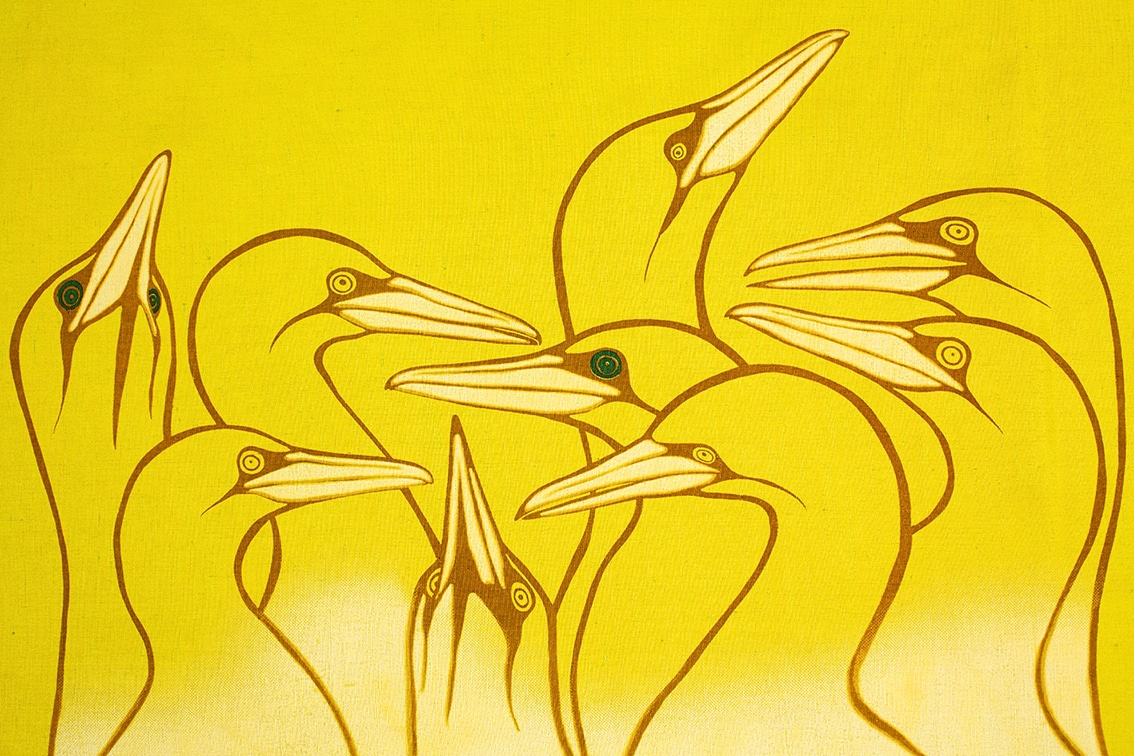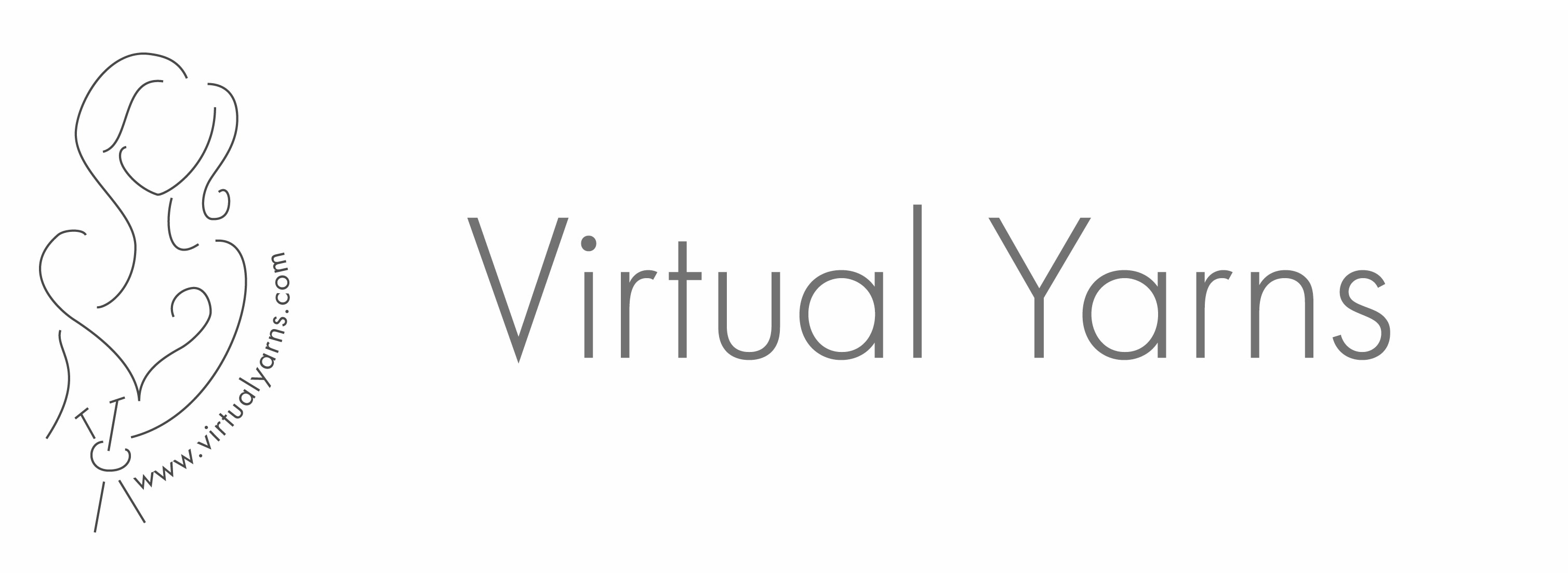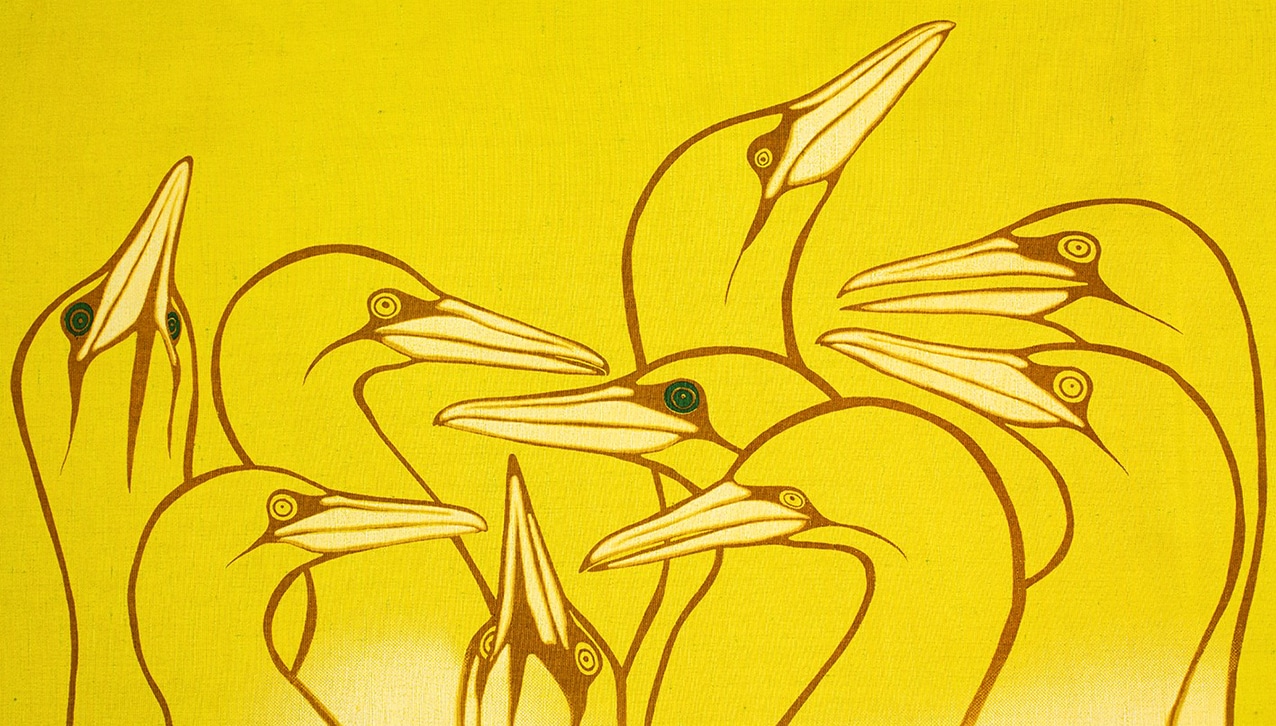
Research, Process & Finished Fabric
The styling for projects like Hiort and Glamourie is not just an accessory to the photoshoots; it is a key part our textile design process and an essential element of the final look. For the Hiort project each set of knitted, woven, embroidered or felted textile designs will have an accompanying printed fabric inspired by an aspect of St Kilda. For the development of our Queen of the Waves the inspiration comes from Boreray and its sea stacs that soar out of the wild Atlantic Ocean, and the thousands of graceful, elegant gannets that occupy the narrow ledges hundreds of feet above the waves.
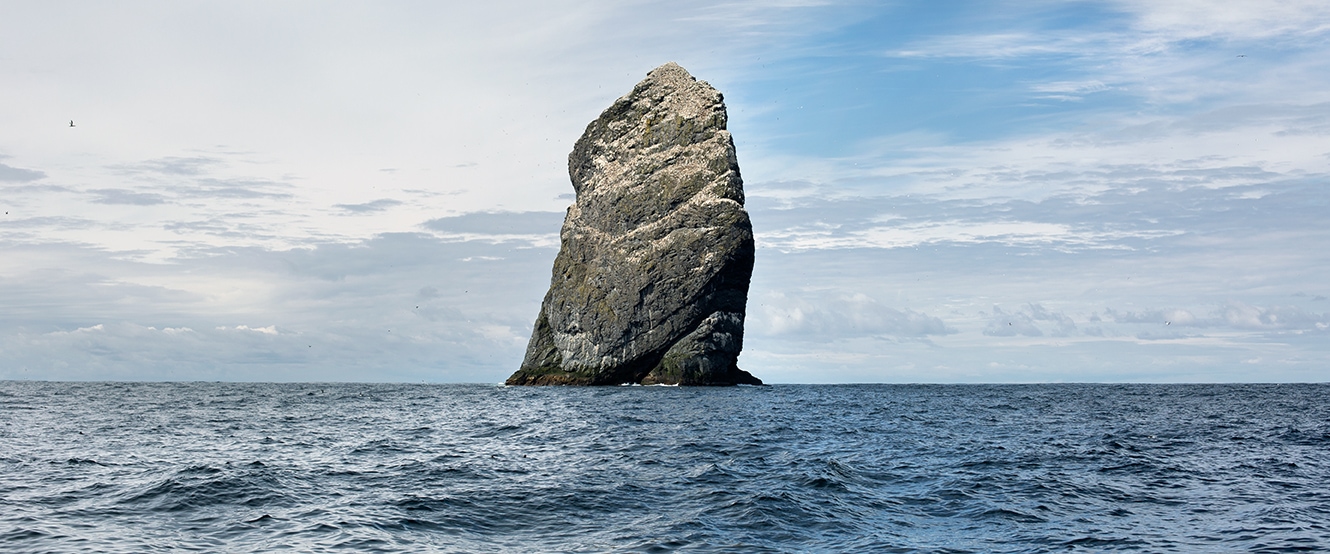
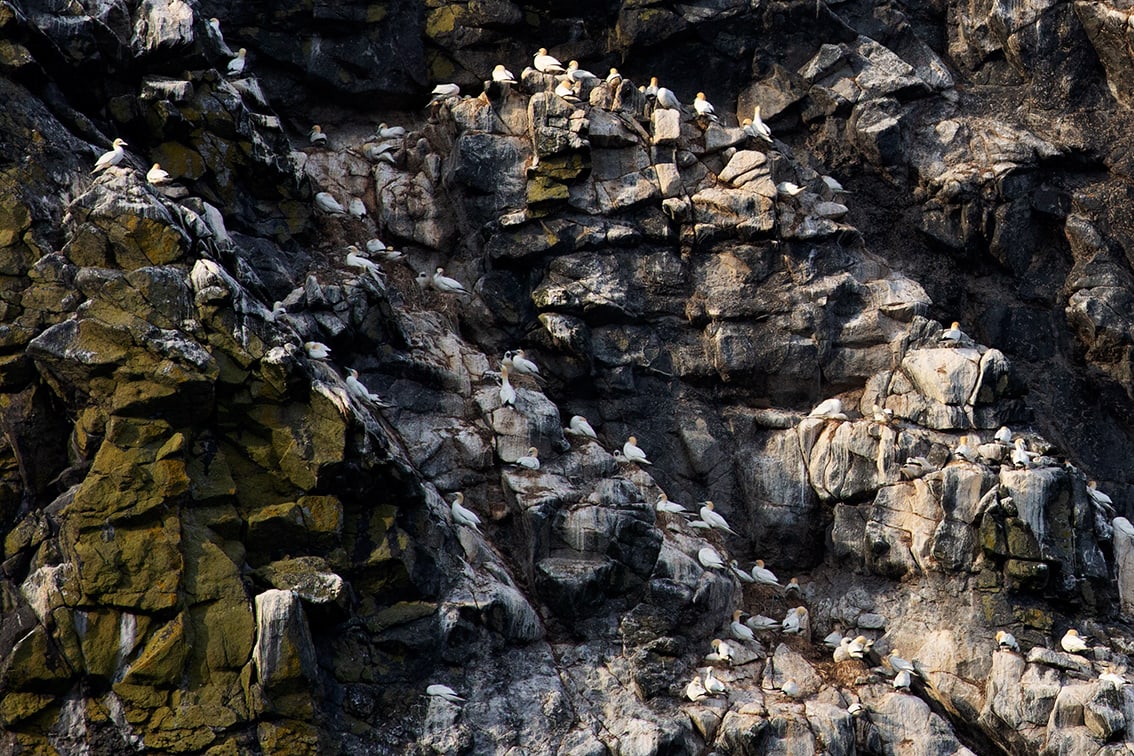
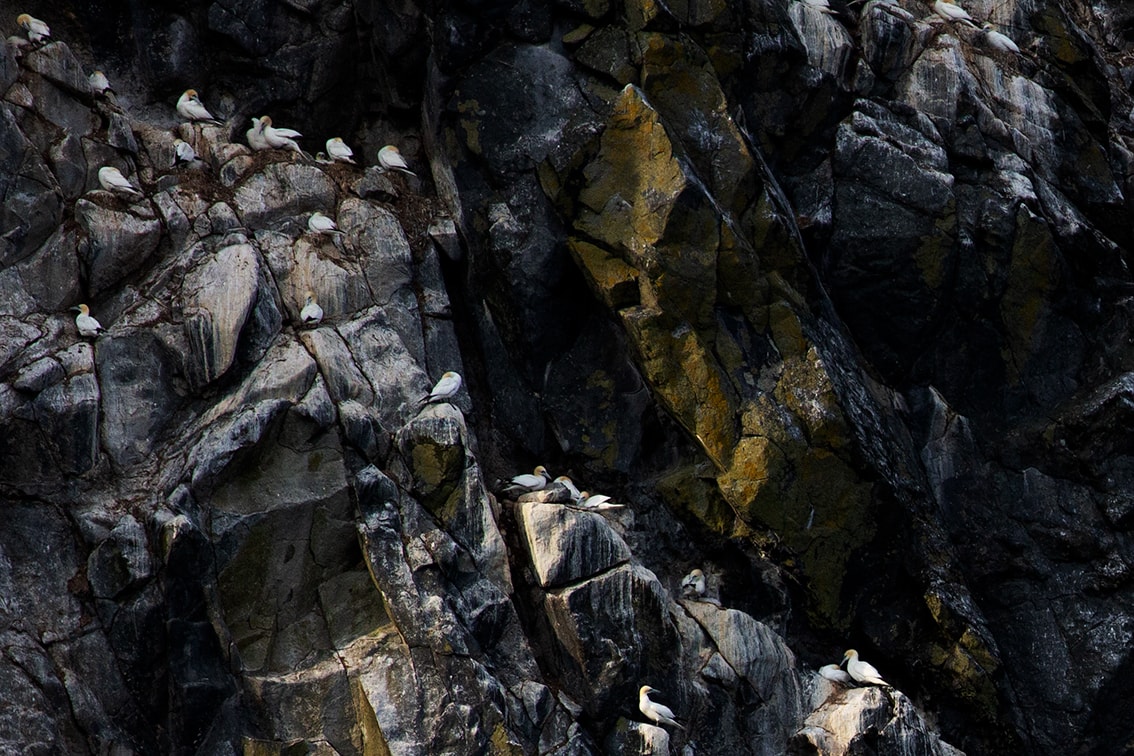
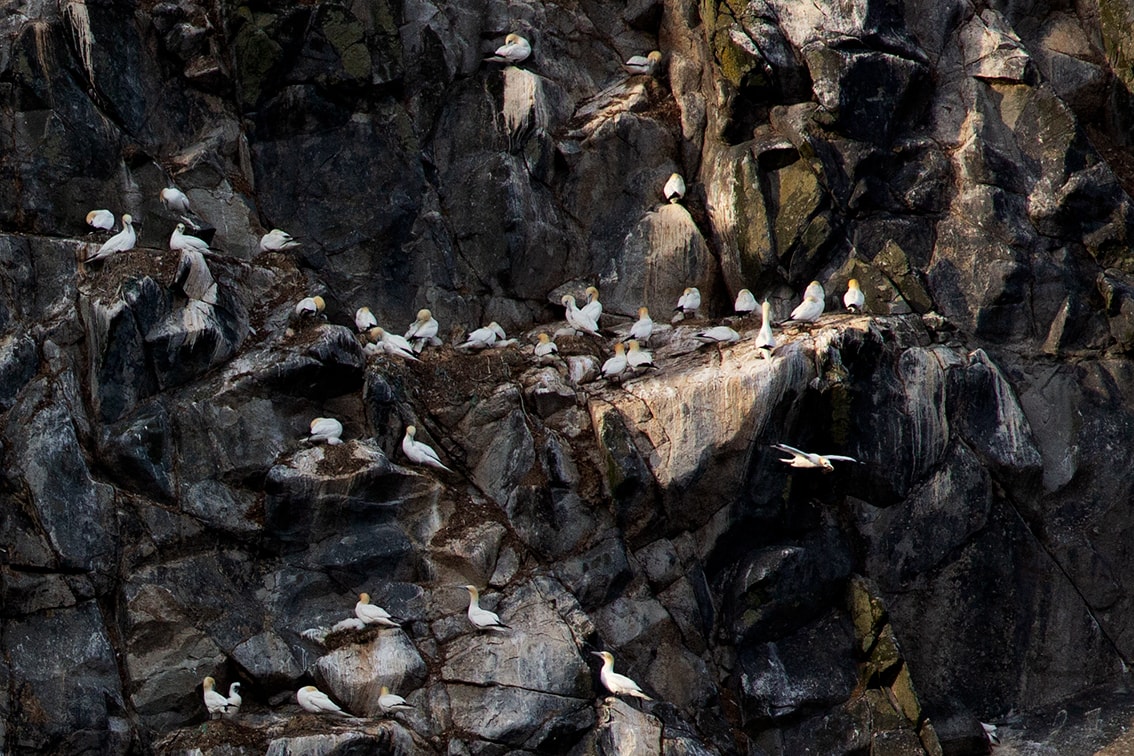
Every fissure and ledge of these immense rock formations are home to at least one gannet family. They gather around every side, providing a gannet soap opera with a cast of over 60,000 birds. I wanted to capture the mood of the ledges where the gannets pose in a myriad of attitudes, so I began by working digitally and drawing the heads of individual birds using a graphics tablet. Once I had my outlines I began to assemble my cluster of gannets.
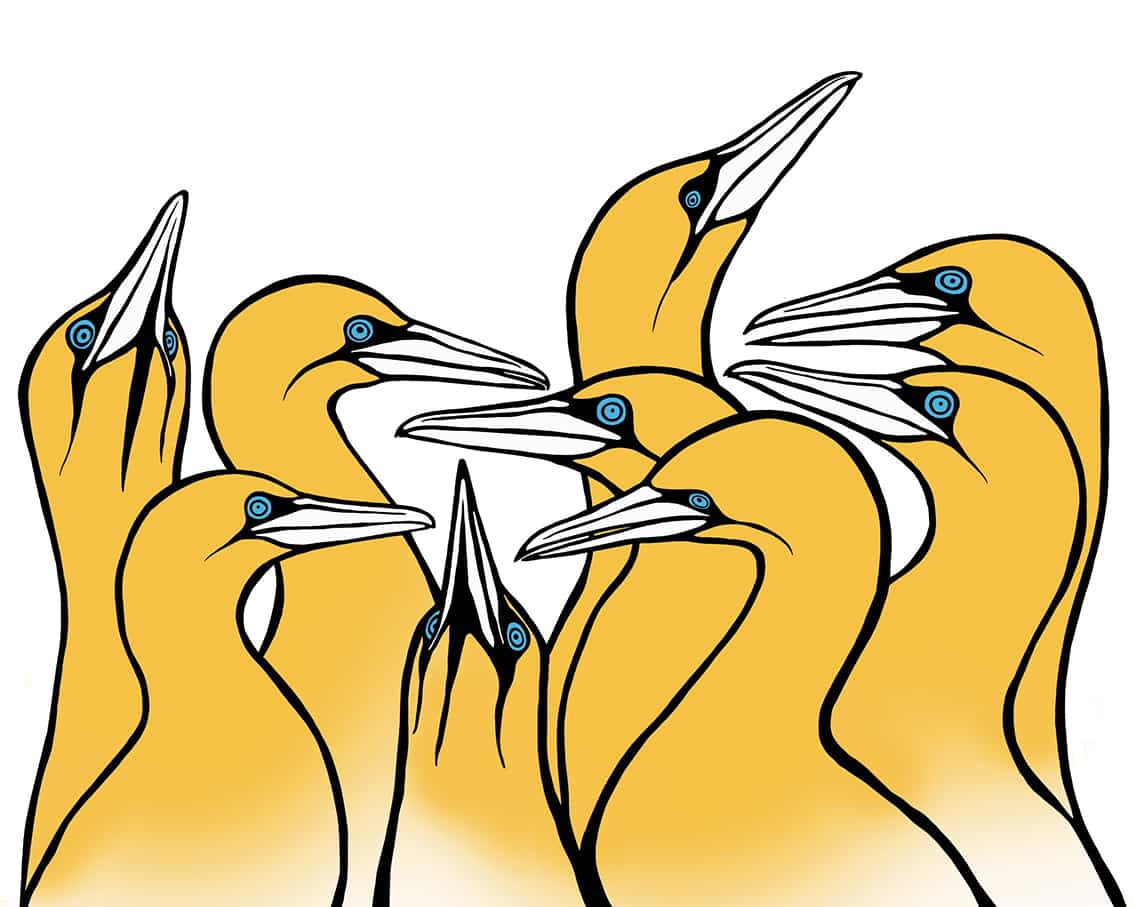
My usual method of working at this point would be to continue to draw gannets until I had my required length of fabric. I would then set the colours, add texture and send sections off for sample printing. However, for the first version of this particular fabric I wanted to try a different process.
Screen printing and digital printing both achieve a finished printed fabric but the methods used are quite different, as are the constraints and the final finish. With digital printing I can create a 3m long repeat like the one below; the only repeat constraint is the file size that my computer can handle. My digital files can also be sampled accurately and re-printed as many times as I like, and I can use as many colours as I want. With screen printing my fabric repeat is limited by the size of the screen. Also, the laborious method of adding colours one at a time is a much slower way of working. The benefit of screen printing is that the hands-on method allows for decisions to be made as you progress and the colours that you end up with are bolder and more intense.
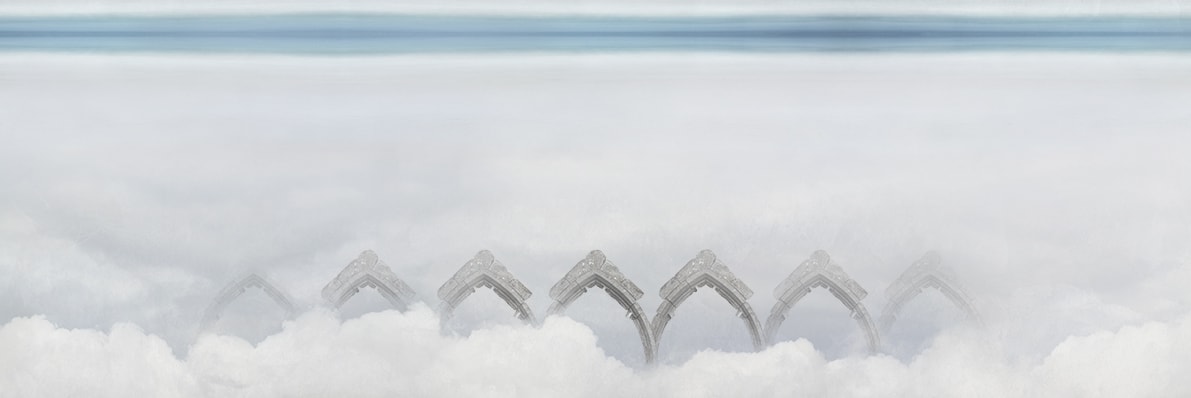
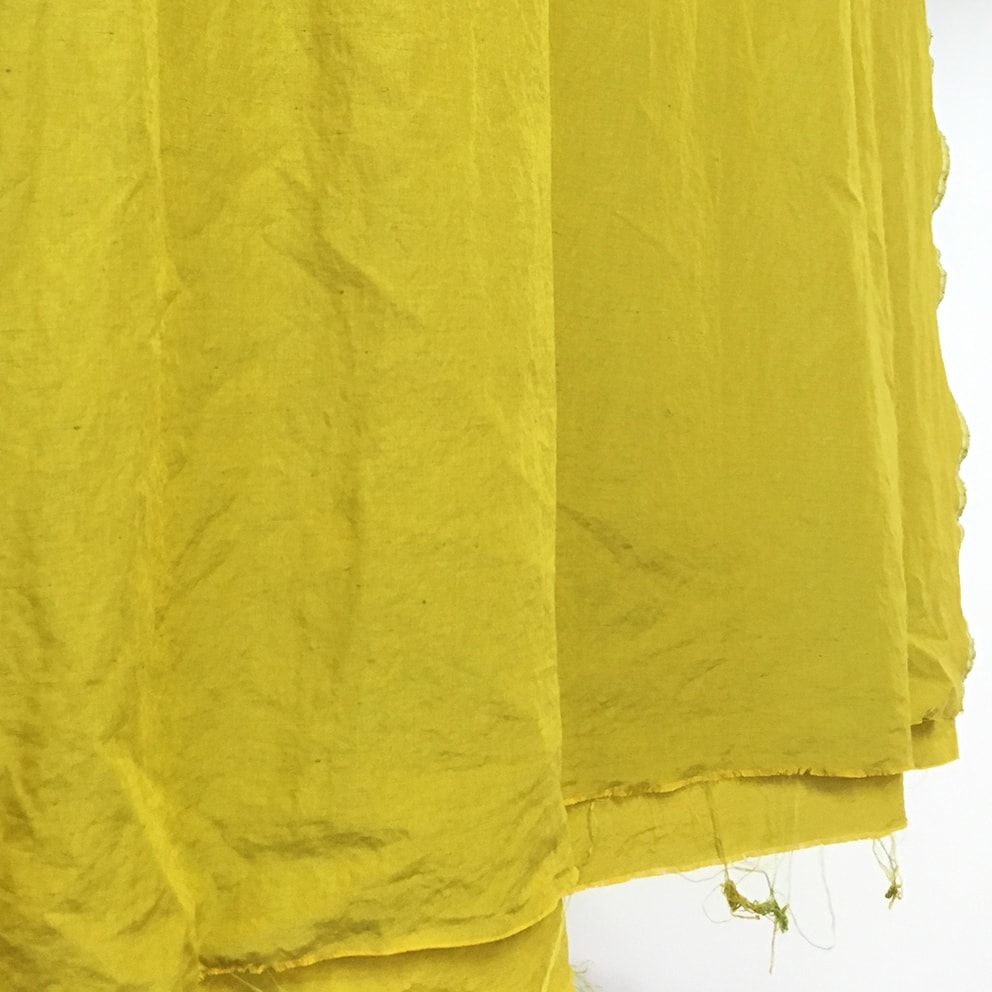
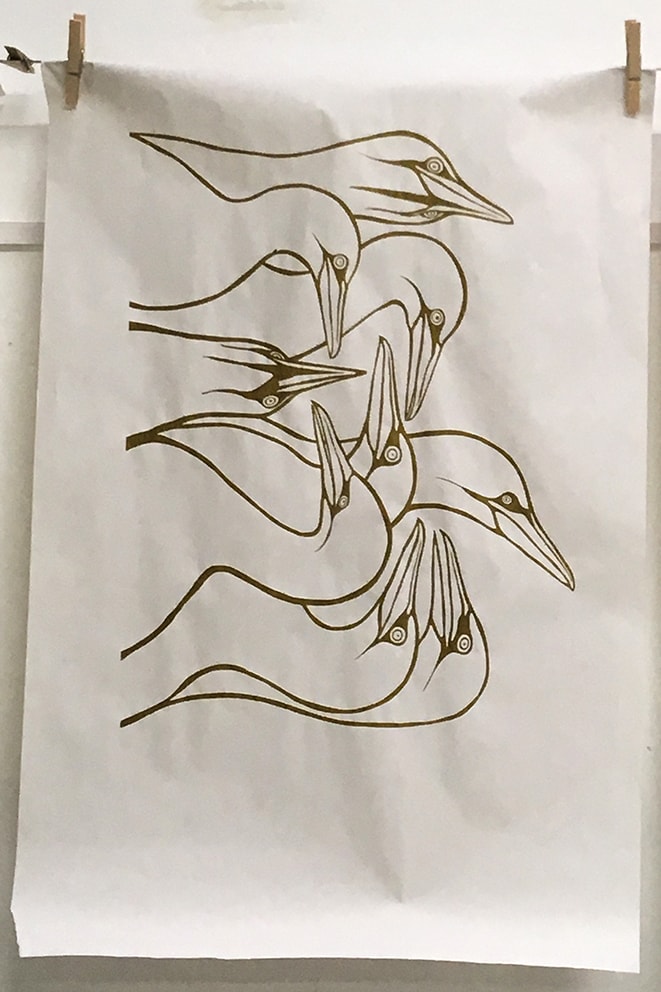
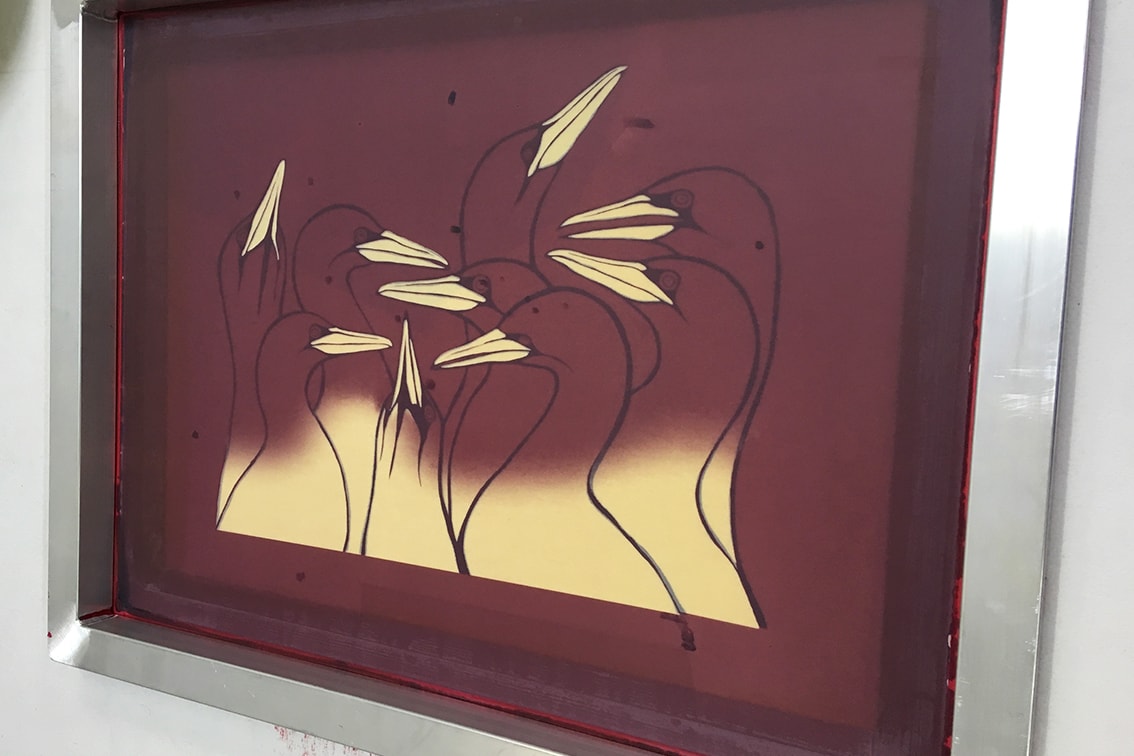
As the equipment for screen printing on fabric is very large and specific, I arranged to borrow the expertise and a slot in the studio space of the wonderful textile artist Joanna Kinnersly-Taylor. I split my artwork into three digital layers (outlines, eyes and beaks/breasts) which she exposed onto three 50cm screens. I decided that the yellow of the birds would dominate as the backdrop of my silk/linen fabric, which you can see above left drying after the dye bath. For the outline of the birds I chose an ochre dye, for their eyes a dark turquoise, and the beaks and breasts were picked out in discharge, which rather than being a colour, strips dye away from the fabric. You can see a paper test of the gannet outline above centre. This test gave me an idea of the final colour of the outline and also showed that the screen did not have any unexpected marks or holes. Above right is my beak/breast screen ready for a sample with the discharge.
Once I had settled on my colours and method I pinned my fabric and began the task of reproducing 4 repeats along the bottom of a 2m piece of fabric, and two repeats on each end of a 1m piece. The longer panel is intended to be a skirt with gannets along the hem, the smaller piece will be a blouse.
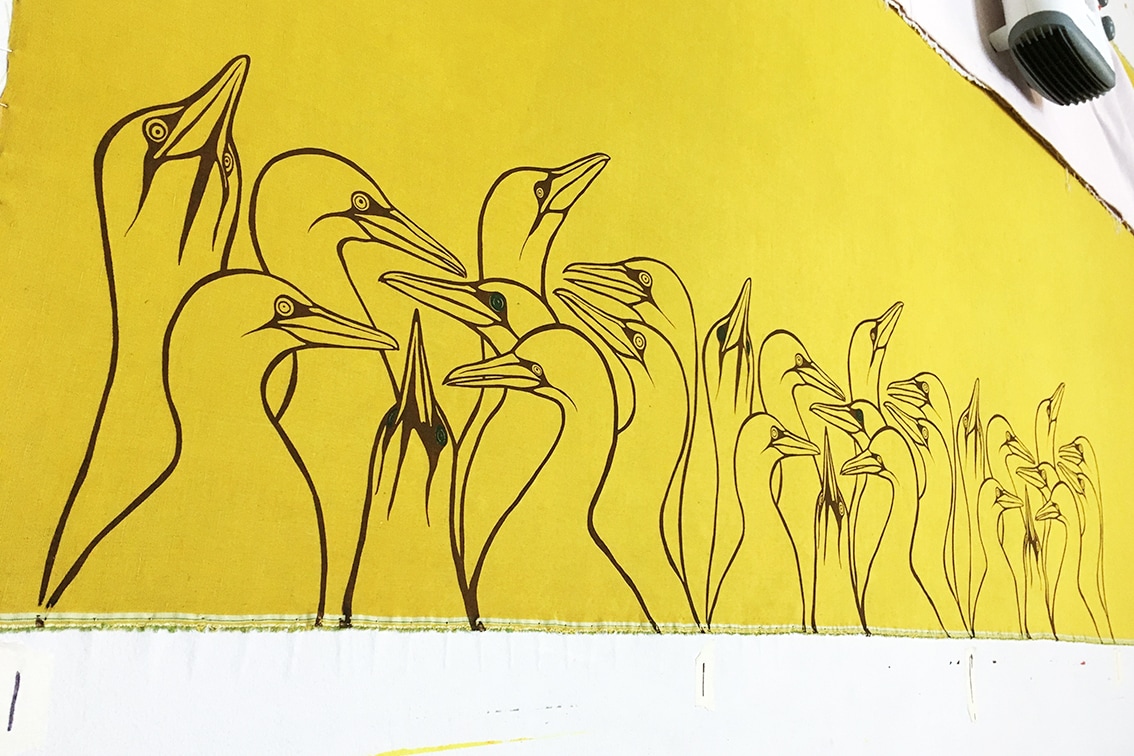
The photo above shows the longer panel taking shape. I decided to print only the occasional, random eye as I went along, which involved blocking out different eyes on each repeat. You can also see the scale of the print alongside my hand. The birds are intended to be roughly life-size to give the impression of the reality of them on the cliff. You can see the double-ended design piece appear, and the final roll of fabric after the washing process was over.
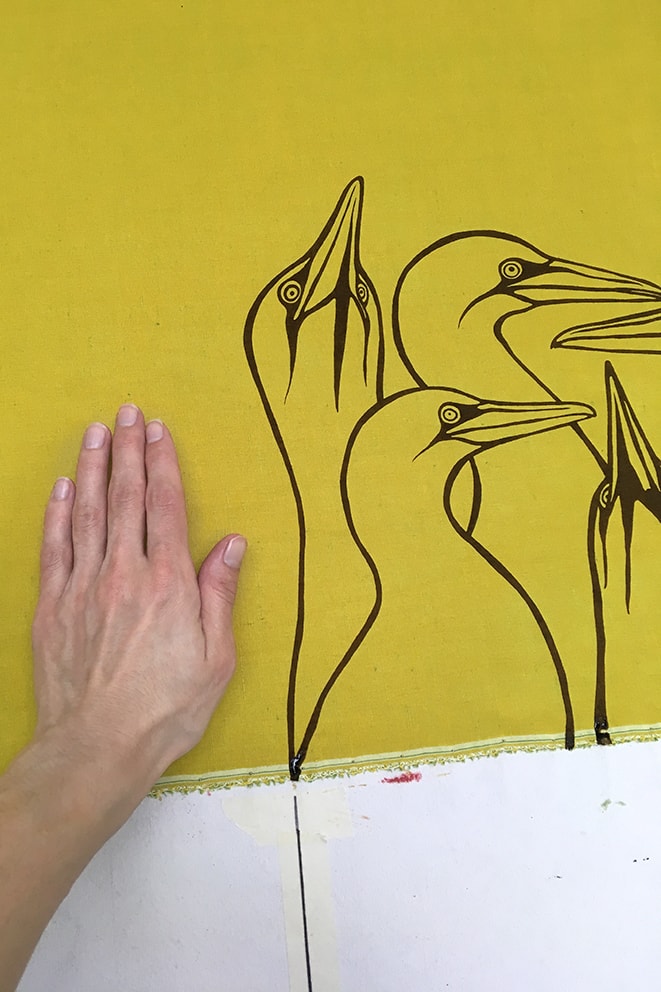
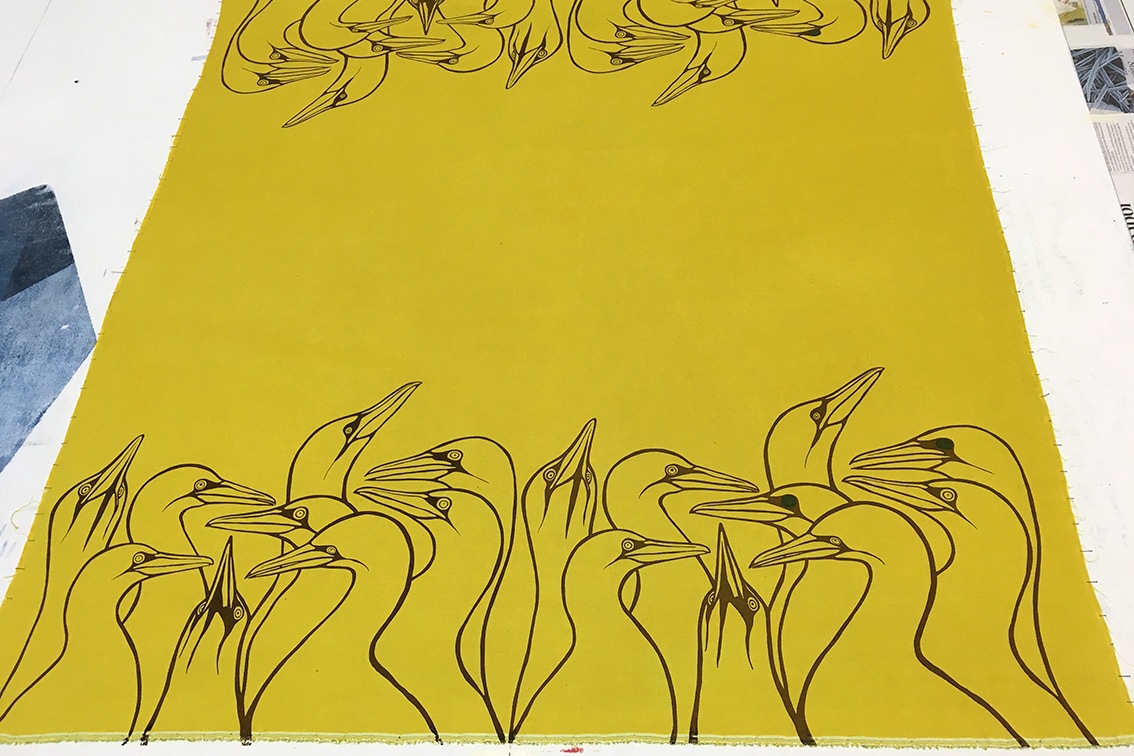
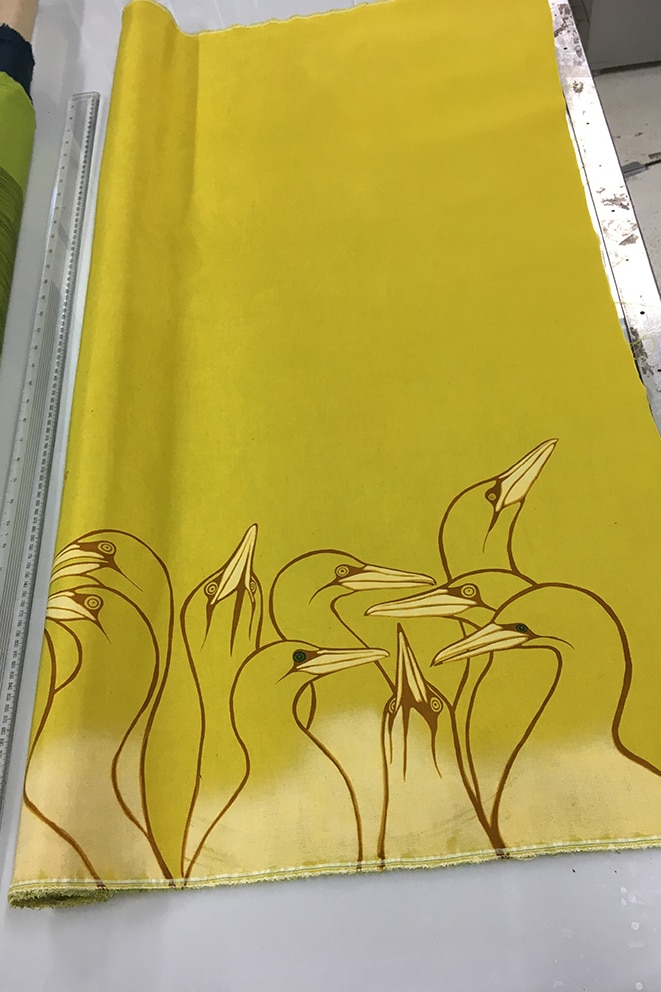
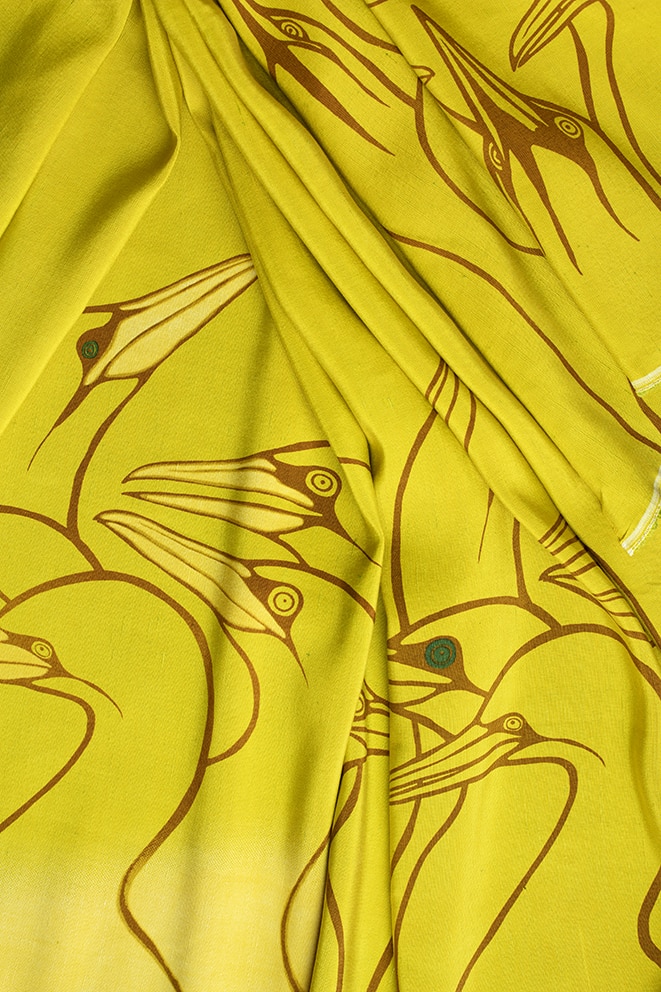
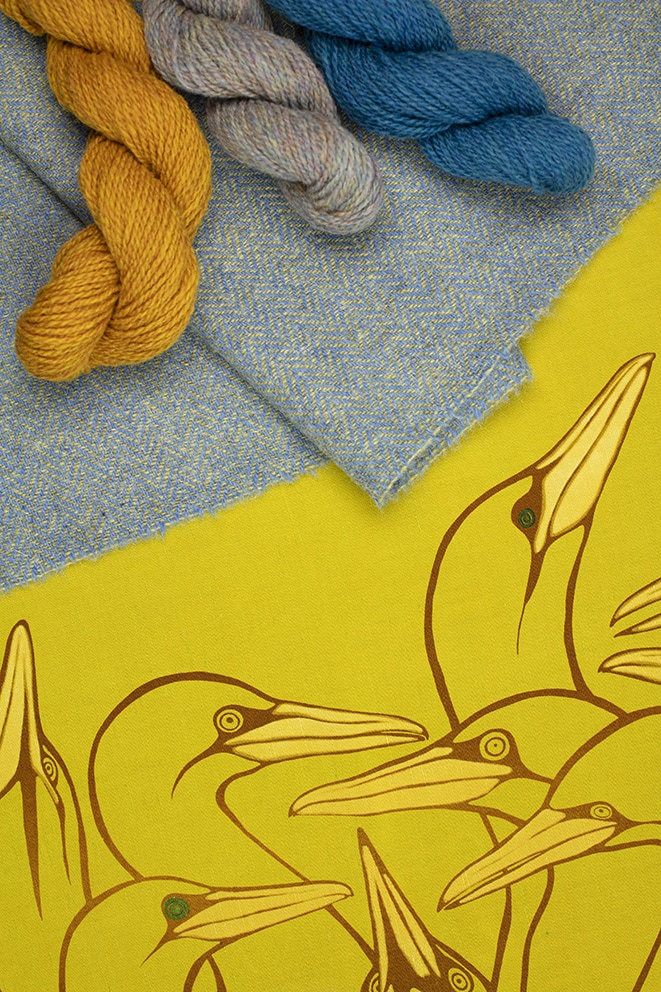
Here you can see the final fabric in detail. These images show how the drape looks, as well as how it behaves next to a sample of Harris Tweed and some of our Hebridean yarn. Now that the final fabric has been developed, I will be drafting the skirt and blouse, first as a toile (using cotton bedsheets to approximate the drape) and then, after final adjustments, I will be using the actual fabric pieces. I will also be returning to the original digital file and expanding it for digital printing in at least two more colourways. It will be sampled on different fabrics to give a range of final applications as we foresee the Queen of the Waves needing more than one fabric weight on her travels.
